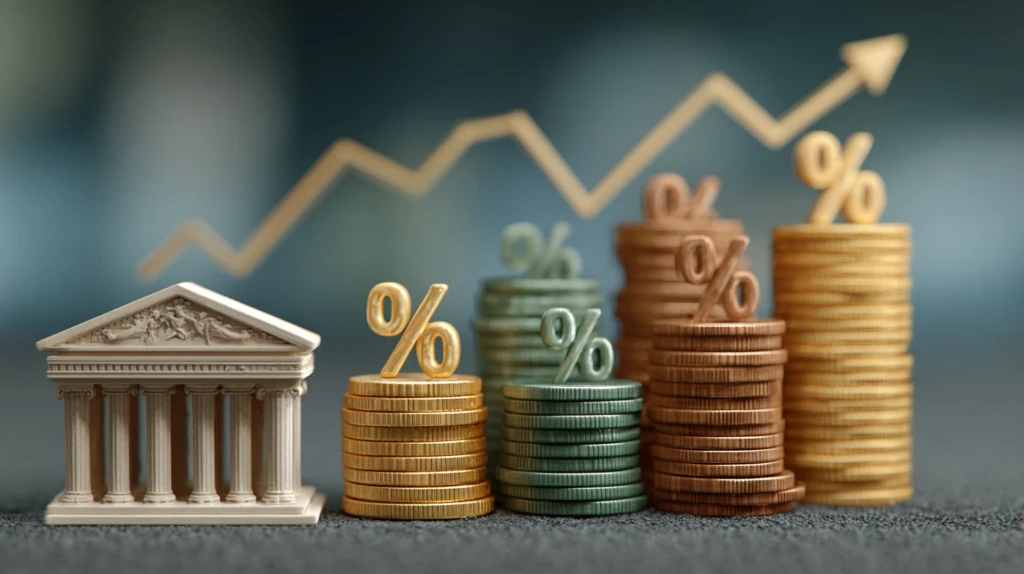What Do Interest Rates Mean?
What do interest rates mean in the context of modern finance? At their simplest, interest rates represent the cost of borrowing money or the reward for saving it. They dictate the terms under which individuals, corporations, and governments can access credit. But beneath this simple definition lies a powerful economic lever that influences inflation, job creation, investment, and even the stability of entire financial systems.
Understanding interest rates is not just about knowing how much your mortgage or credit card costs; it’s about grasping one of the most influential forces shaping the global economy.
The Basics: How Interest Rates Work
Interest rates are expressed as a percentage of the principal amount borrowed or saved. When you borrow money from a bank, the interest rate tells you how much extra you’ll pay back over time. When you deposit money, the rate determines how much you earn in return.
Types of Interest Rates
- Nominal Rates: The percentage stated on loans or savings without accounting for inflation.
- Real Rates: Adjusted for inflation, reflecting the true cost of borrowing or return on saving.
- Fixed vs. Variable Rates: Fixed rates stay constant over time, while variable rates fluctuate with market conditions.
Central Banks and Policy Power
One cannot answer what do interest rates mean without considering central banks. Institutions like the U.S. Federal Reserve or the European Central Bank set benchmark rates that ripple across the financial system.
When inflation rises, central banks typically increase rates to cool spending. Conversely, when economies slow, lowering rates makes borrowing cheaper and encourages growth.
- Rising Rates: Increase the cost of borrowing, slowing consumption and potentially lowering inflation.
- Falling Rates: Spur borrowing and investment but risk higher inflation.
This delicate balance makes interest rates one of the most closely watched economic indicators worldwide (source: Federal Reserve).
Why Interest Rates Matter for Consumers
For households, the meaning of interest rates translates directly into everyday decisions.
Mortgages and Loans
When central banks hike rates, mortgage payments increase. A small percentage rise can add hundreds of dollars monthly to a household’s expenses.
Credit Cards
Credit card debt is among the most sensitive to rate changes, with variable APRs climbing rapidly when base rates rise.
Savings Accounts
Higher interest rates may hurt borrowers, but they benefit savers, who see better returns on deposits.
Business and Investment Implications
What do interest rates mean for companies and investors? The implications are enormous.
- Corporate Borrowing: Higher rates discourage businesses from taking on new debt to expand operations.
- Stock Markets: Rising rates often pressure stock prices as capital shifts toward safer bonds.
- Real Estate: Property markets cool as mortgages become more expensive, reducing affordability.
According to analysis by the Bank for International Settlements (BIS), even small changes in interest rates can reshape investment flows across borders (source: BIS).
Global Impact: Interest Rates Across Borders
Interest rates are not confined within one nation. In today’s interconnected markets:
- Emerging markets often face capital flight when developed economies raise rates.
- Currency values shift as investors chase higher yields abroad.
- Sovereign debt becomes harder to service in developing nations when global rates climb.
This interdependence highlights that understanding interest rates is essential for anyone interested in global trade, geopolitics, and financial stability.
Historical Shifts in Interest Rate Policy
Interest rates are shaped by history as much as by current economics.
- 1980s: The U.S. Federal Reserve raised rates above 15% to curb runaway inflation.
- 2008 Financial Crisis: Rates were slashed to near zero to stimulate lending and recovery.
- 2020 Pandemic: Ultra-low rates returned, fueling both economic support and asset bubbles.
These shifts demonstrate that interest rates are not static—they evolve with the crises and opportunities of their time.
The Psychological Factor
Beyond economics, interest rates influence behavior. High borrowing costs deter risky ventures, while low rates encourage risk-taking. Investors, homeowners, and entrepreneurs all make decisions through the lens of prevailing rates.
This psychological dimension explains why central banks sometimes rely on signaling—hinting at future rate changes—to shape market behavior before making actual policy moves.
The Future of Interest Rates
The question what do interest rates mean will continue to evolve as new challenges emerge:
- Digital Currencies: Central bank digital currencies (CBDCs) could redefine how interest rates are applied in monetary systems.
- Inflation Pressures: Climate change, supply chain shifts, and geopolitical tensions may create inflationary pressures requiring new rate strategies.
- AI and Predictive Models: Data-driven forecasting may reshape how central banks decide on rate moves.
FAQs on What Do Interest Rates Mean?
What do interest rates mean in simple terms?
Interest rates represent the cost of borrowing money or the reward for saving it, expressed as a percentage.
What do interest rates mean for inflation?
Higher rates typically reduce inflation by making borrowing more expensive, while lower rates can increase inflation by stimulating spending.
What do interest rates mean for housing?
They directly affect mortgage affordability. Rising rates increase monthly payments, reducing housing affordability.
What do interest rates mean in global finance?
They influence capital flows, currency values, and sovereign debt management across nations.
Conclusion: More Than Just Numbers
So, what do interest rates mean? They are far more than abstract percentages. They shape economies, determine the affordability of homes, affect the value of currencies, and influence the choices of investors worldwide. Interest rates embody the balance between growth and stability, risk and reward, present and future.
As global economies face uncertainty—from geopolitical conflicts to technological disruption—interest rates will remain the most powerful signal of financial direction. Understanding them is not optional; it’s essential for navigating the complexities of modern life.

